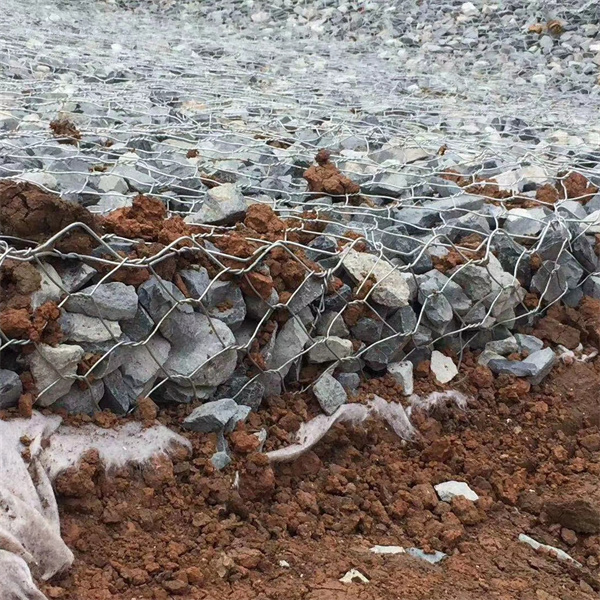Қар . 11, 2024 12:52 Back to list
buy build your own gabion wall
How to Buy and Build Your Own Gabion Wall
Gabion walls are an increasingly popular landscaping feature that combines functionality with aesthetic appeal. They are traditionally used for controlling erosion, managing stormwater, and providing structural integrity, but they can also serve as beautiful garden beds or decorative elements in your outdoor space. In this article, we will explore the process of buying and building your own gabion wall, discussing the materials needed, construction tips, and design ideas.
Understanding Gabion Walls
Gabion walls are made of stone-filled wire mesh cages or baskets. The term gabion originates from the Italian word “gabbione,” which means big cage.” These walls are primarily used in civil engineering due to their ability to absorb and deflect water, making them ideal for retaining walls, riverbank protection, and other erosion control structures. However, their versatile design allows them to be used in residential landscaping as well.
Step 1 Planning Your Gabion Wall
Before you start building, it’s essential to plan your project appropriately. Consider the following factors
- Location Choose a suitable site for your gabion wall, whether you want it for erosion control, as a decorative feature, or to create a raised garden bed. - Design Determine the height and length you want. Gabion walls can vary in size, from low decorative walls to high retaining walls.
- Permits Check local building regulations. Depending on your location, you may need a permit to build a wall of a certain height.
Step 2 Gathering Materials
Once you have a solid plan, it’s time to gather the necessary materials. Here’s what you’ll need
- Gabion Baskets You can purchase gabion baskets from home improvement stores or online retailers. They come in various sizes, so choose the ones that best fit your project.
- Filling Material For the best results, use durable and decorative stones. River rock, granite, or limestone are popular choices. The stones should be of varying sizes to ensure stability and visual interest.
- Tools Basic tools include gloves, a shovel for digging, and a level for ensuring your wall is straight. A mallet may also come in handy to help shape the stones within the gabion.
buy build your own gabion wall

Step 3 Preparing the Site
Clear the area where you plan to construct the wall. Remove any grass, debris, or roots to create a flat base. Depending on the height of your wall, you may need to dig a shallow trench to ensure the wall is stable and anchored. Always check for level ground, as uneven surfaces can lead to structural problems.
Step 4 Assembling the Gabion Wall
Building the wall is straightforward
1. Position the Gabion Baskets Place the gabion baskets in your trench or on the prepared area. Make sure they are level and aligned correctly.
2. Fill the Baskets Start filling each basket with stones. It’s best to place the larger stones on the bottom layer and smaller stones on top to create a stable structure. Use your hands or a mallet to ensure the stones fit tightly together.
3. Secure the Baskets Once the baskets are filled to the desired height, close them according to the manufacturer’s instructions. This may involve bending the wire or using clips to secure the tops.
4. Repeat Continue the process for additional layers if your wall is higher than one basket. Always check for levelness as you progress.
Step 5 Final Touches
To enhance the look of your gabion wall, consider adding plants or flowers in front of it or between the stones for a more natural appearance. You can also create a seating area or integrate the wall into a larger landscaping design.
Conclusion
Building a gabion wall can be a rewarding DIY project that enhances your outdoor space while providing practical benefits. With careful planning, the right materials, and some effort, you can create a stunning and durable wall that blends functionality with beauty. Whether you’re using it for erosion control, as part of your garden, or purely for aesthetics, a gabion wall is an excellent addition to any landscape design.
So gather your materials and get started on your gabion wall project today – you’ll be amazed at how much it can transform your outdoor environment!
-
Versatility of Chain Link Fence Gabion
NewsMay.13,2025
-
Trusted Gabion Box Suppliers
NewsMay.13,2025
-
PVC Coated Gabion for Long-Lasting Structural Integrity
NewsMay.13,2025
-
Garden Gabion for Stylish
NewsMay.13,2025
-
Galvanized Gabion for Durable Outdoor Structures
NewsMay.13,2025
-
Gabion Box Factory
NewsMay.13,2025
-
Gabion Basket Wire Gauge and Mesh
NewsMay.13,2025






